Nestled along the southern coast of Sardinia, the ancient Phoenician settlement of Nora beckons visitors to uncover its captivating history. This private experience invites you to explore the impressive Roman ruins and discover the luxurious lifestyles of Nora’s elite. From the well-preserved thermal baths to the intricately decorated mosaics, each step through this archaeological site promises to reveal fascinating insights into the region’s rich cultural heritage. Whether you’re marveling at the majestic piazza or uncovering the secrets of the Aesculapius sanctuary, this private tour allows you to delve deeper into Nora’s past at your own pace.
Key Points
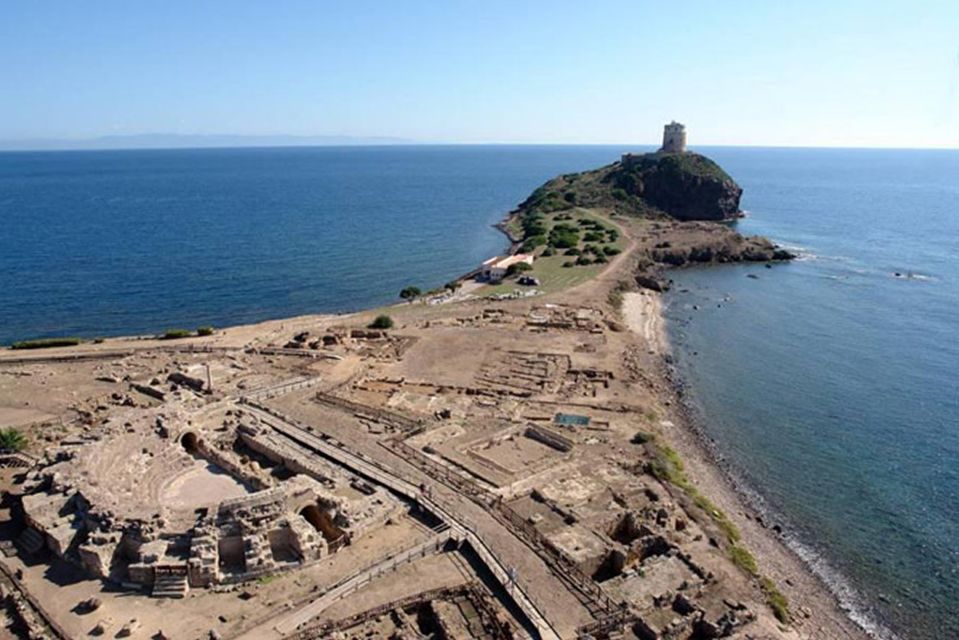
• Explore the well-preserved Phoenician and Roman ruins of the ancient city of Nora on a private guided tour.
• Marvel at the impressive Roman thermal baths, grandeur of the Forum, and captivating mosaics in the Nobleman’s House.
• Discover the ancient theater and experience the annual La Notte dei Poeti festival celebrating Nora’s rich cultural heritage.
• Visit the Aesculapius sanctuary and observe the intricate mosaic-lined terraced floors showcasing ancient craftsmanship.
• Combine the on-land tour with a unique opportunity to snorkel and discover submerged Roman ruins off the coast of Punta del Coltellazzo.
Phoenician Origins of Nora
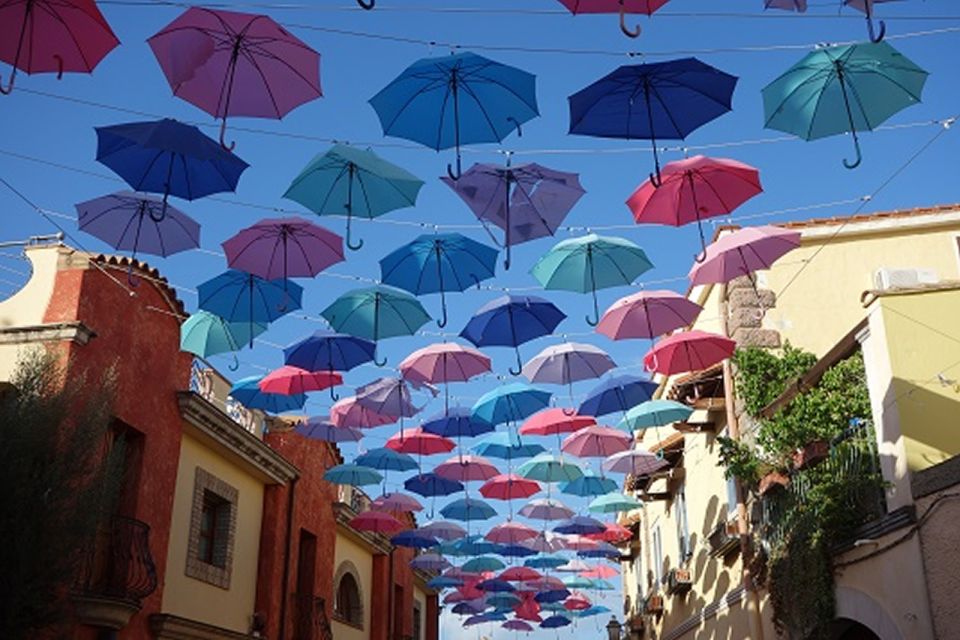
The ancient Phoenician settlement of Nora, dating back to the 8th century BC, was established as a strategic commercial hub and port on the southern coast of Sardinia.
The Phoenicians, known for their seafaring abilities and trading prowess, recognized the potential of Nora’s sheltered harbor and its proximity to vital maritime routes.
Over time, the city grew in importance, serving as a key stop for Phoenician ships traversing the western Mediterranean.
Nora’s location and thriving commerce made it an attractive target, leading to its eventual conquest by the Romans in 238 BC.
However, the Phoenician roots of this ancient city continue to captivate visitors to this day, offering a glimpse into the remarkable maritime culture that once flourished in the region.
Key Attractions and Highlights
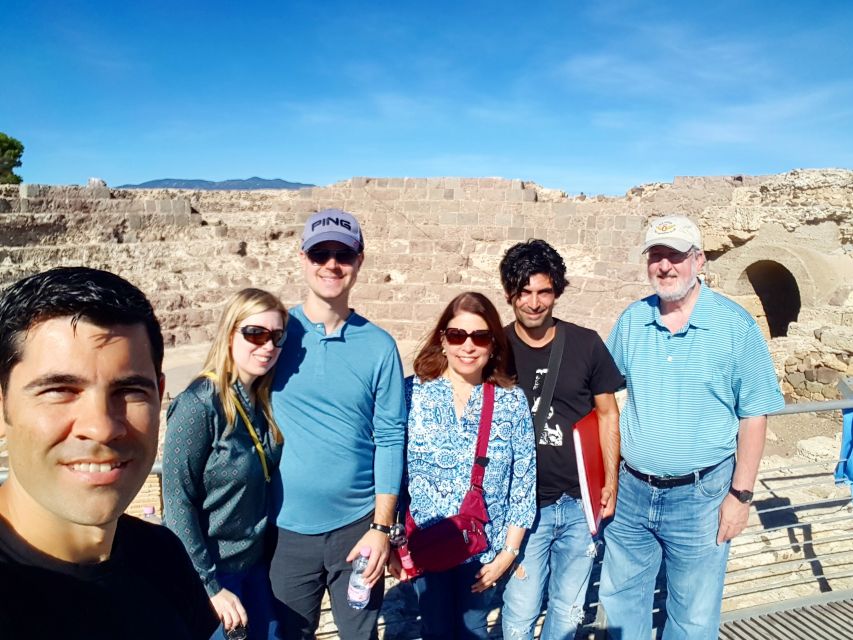
Visitors touring the Nora Archaeological Site can explore a range of well-preserved ancient structures, each offering a unique glimpse into the site’s storied past.
Key highlights include the impressive Roman thermal baths, the grand Piazza del Foro, and a temple with a six-column entrance hall.
Travelers can also wander through the remains of a nobleman’s house, adorned with beautiful mosaic floors and the captivating ‘Nereid on a marine centaur‘ mosaic.
The ancient theater, which hosts the annual La Notte dei Poeti festival, is another must-see.
Plus, the Aesculapius’s sanctuary, with its mosaic-lined terraced, provides a serene setting for visitors to enjoy Nora’s rich history.
Exploring the Roman Thermal Baths
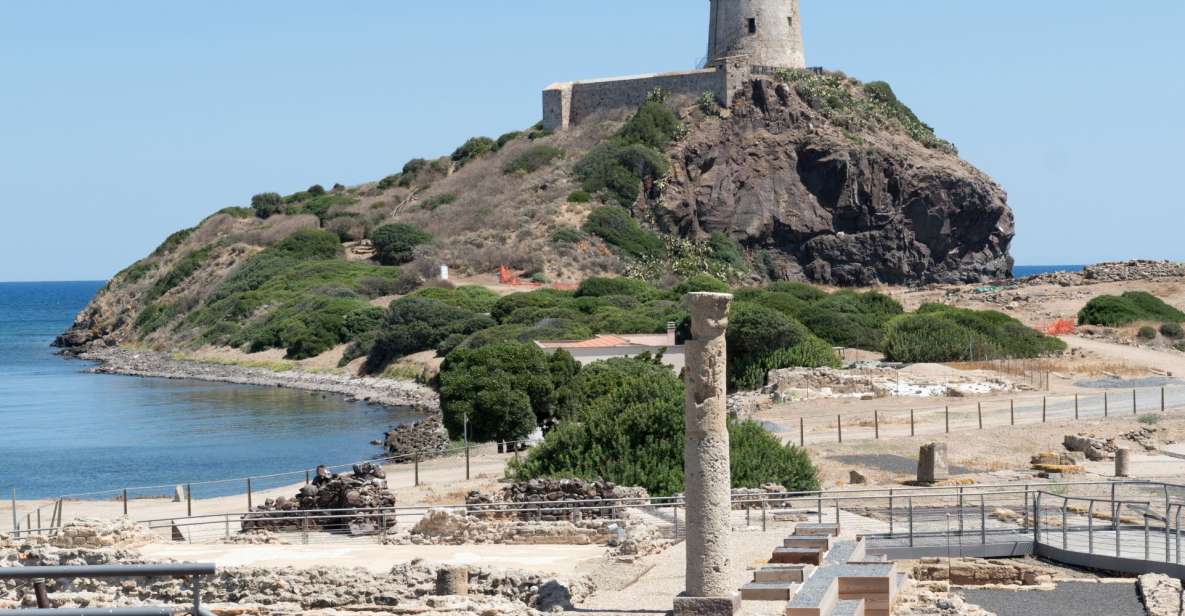
One of the most captivating features at the Nora Archaeological Site is the well-preserved Roman thermal baths, which offer a glimpse into the daily lives of the site’s ancient inhabitants.
Visitors can explore the extensive bathing complex, including the frigidarium (cold room), tepidarium (warm room), and caldarium (hot room). The baths were an important social hub, where locals and travelers would gather to relax, socialize, and maintain their personal hygiene.
As you wander through the baths, you’ll be struck by the intricate architectural details and the impressive scale of the complex, which once served the entire city. This is a must-see highlight for anyone interested in ancient Roman history and culture.
Mosaics and Nobleman’s House
Exquisite mosaics adorn the floors of the Nobleman’s House, showcasing the wealth and refined tastes of Nora’s elite residents during the site’s heyday in the 2nd-3rd centuries AC.
Visitors can marvel at the intricate designs, including the captivating ‘Nereid on a marine centaur‘ mosaic, which adds a touch of mythological splendor to the ancient abode.
The mosaic-lined floors in the nobleman’s quarters provide a glimpse into the luxurious lifestyle of Nora’s upper class. As visitors explore the rooms, they can imagine the daily lives of the home’s former occupants, who’d have enjoyed the stunning mosaics as part of their everyday surroundings.
The Nobleman’s House is a testament to the artistry and prosperity that once thrived in this ancient Phoenician city.
Ancient Theater and Poetic Nights
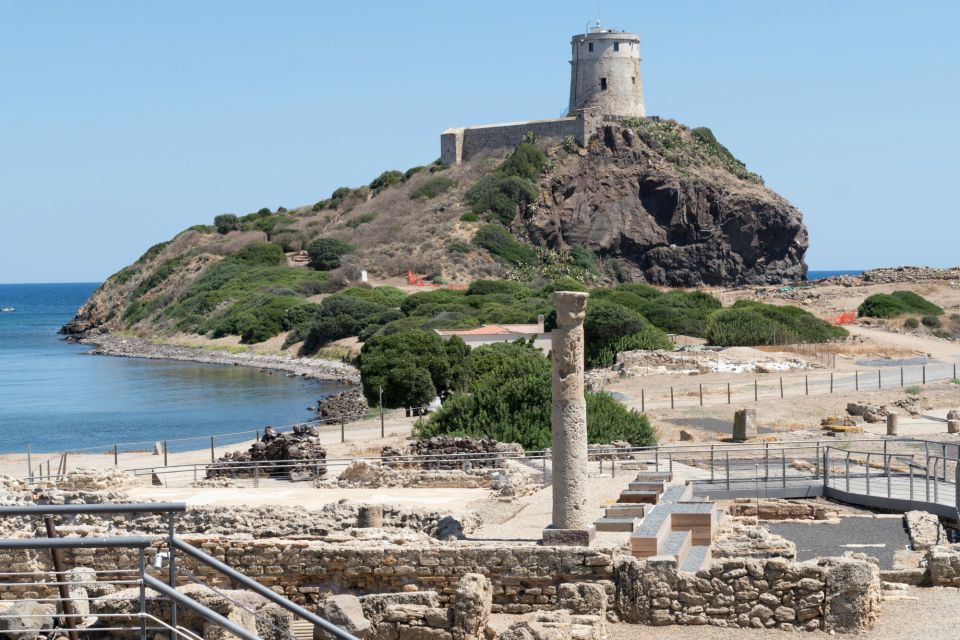
Beyond the nobleman’s luxurious abode, the ancient theater of Nora stands as a captivating reminder of the city’s cultural vibrancy.
This remarkably well-preserved structure hosts the annual La Notte dei Poeti (The Night of the Poets) festival, drawing visitors from far and wide to experience the magic of poetry recitals under the stars.
Visitors can explore the theater’s tiered seating, marvel at the impressive acoustics, and imagine the lively performances that once graced this stage.
The festival’s intimate atmosphere and breathtaking setting make it a truly unique opportunity to take in Nora’s rich cultural heritage and witness the timeless art of spoken word.
Aesculapius’s Sanctuary and Terraced Mosaics
The Aesculapius’s sanctuary, dedicated to the Roman god of medicine, features a series of terraced mosaics that captivate visitors with their intricate designs and vibrant colors. Ascending the tiered levels, one is treated to a mesmerizing display of ancient craftsmanship, where the patterns and motifs evoke the healing powers associated with this sacred site.
| Design Elements | Description |
|---|---|
| Geometric Patterns | Intricate arrangements of shapes and lines, creating a sense of harmony and balance. |
| Aquatic Motifs | Depictions of marine life, such as fish and sea creatures, reflecting the sanctuary’s coastal location. |
| Symbolic Imagery | Representations of healing symbols, like the Aesculapius staff, reinforcing the site’s sacred purpose. |
These stunning mosaics not only showcase the exceptional skill of the ancient artisans but also provide a glimpse into the revered role of Aesculapius in Nora’s cultural and spiritual landscape.
Nearby Town of Pula
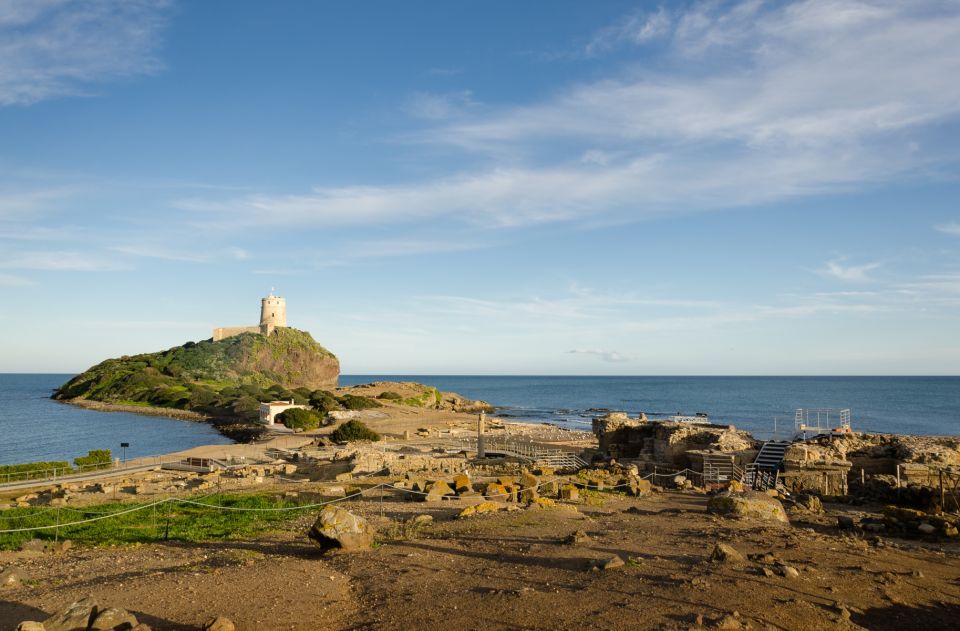
Along with the ancient wonders of Nora, visitors can explore the nearby town of Pula, which offers its own charming alleys and craft shops.
Just a short distance from the archaeological site, Pula is a delightful coastal town worth visiting.
Stroll through its picturesque streets, popping into local shops and galleries showcasing the work of talented artisans:
- Browse handmade ceramics, glassware, and textiles reflecting Sardinian traditions
- Discover independent boutiques selling stylish clothing, accessories, and home decor
Sample fresh seafood and regional specialties at cozy cafes and trattorias.
Take in the laid-back Mediterranean atmosphere and stunning seaside views.
Snorkeling and Underwater Roman Remains
Visitors to the Nora Archaeological Site can also embark on a snorkeling excursion to explore the Roman roads and remains submerged off the nearby Punta del Coltellazzo headland.
This underwater adventure offers a unique perspective on Nora’s ancient past. Swimmers can glide over sunken columns, mosaic floors, and other well-preserved ruins, providing a rare glimpse into the city’s maritime heritage.
The clear Mediterranean waters make for excellent visibility, allowing visitors to fully enjoy this captivating archaeological landscape.
This optional snorkeling activity complements the on-land tour of the Nora site, giving travelers a comprehensive understanding of this remarkable Phoenician and Roman settlement.
Frequently Asked Questions
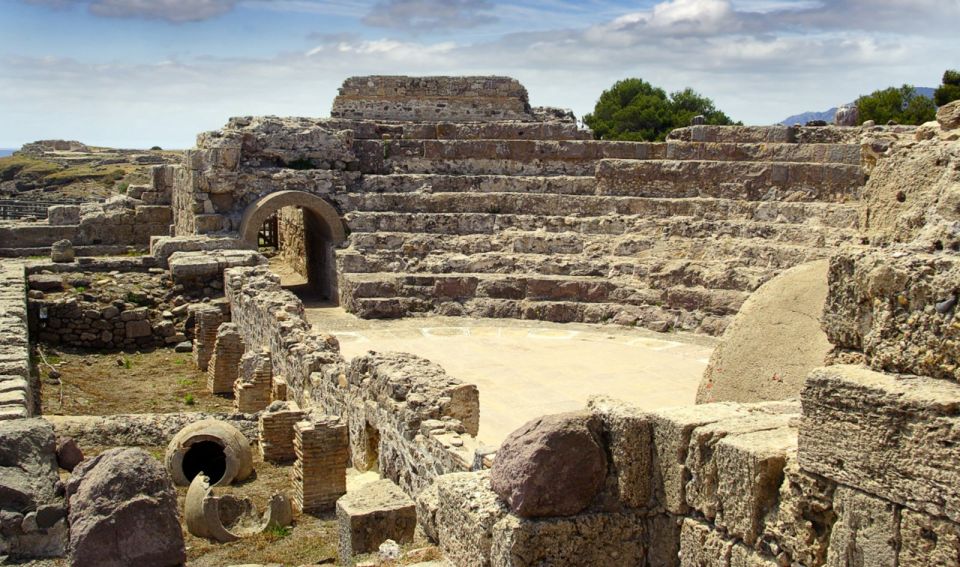
What Is the Cancellation Policy for This Tour?
The cancellation policy allows customers to cancel up to 24 hours before the tour for a full refund. Cancellations within 24 hours may incur a fee. Check with the tour provider for their specific policy.
Are Audio Guides Available During the Tour?
Audio guides aren’t available on this private tour. Instead, you’ll have a knowledgeable guide providing live commentary and insights throughout the Nora Archaeological Site visit to enhance your understanding of the ancient Phoenician and Roman ruins.
Can the Tour Be Customized to Include Additional Activities?
The tour can be customized to include additional activities like visiting the nearby town of Pula or going snorkeling to see Roman remains. The tour guide is flexible in accommodating guests’ interests and needs.
What Is the Dress Code Recommended for the Tour?
The tour recommends comfortable, casual attire. Wear sturdy walking shoes, as the site involves uneven terrain. Bring a hat, sunscreen, and water to stay cool and hydrated during the outdoor exploration.
Is There an Option to Extend the Tour Duration?
The tour duration is fixed at 4 hours, but it may be possible to extend the experience for an additional fee. Travelers should check with the tour provider about any options to lengthen the tour.
Recap
Nora’s archaeological site offers a captivating glimpse into Sardinia’s ancient Phoenician and Roman history.
From the well-preserved thermal baths and mosaics to the annual poetry festival at the ancient theater, visitors can enjoy the site’s rich cultural heritage.
Exploring the Aesculapius sanctuary and nearby Pula town with its underwater Roman ruins, this private experience allows travelers to uncover Nora’s secrets at their own pace.
